Fly Model 1/48 scale
Grunau Baby
by Roland Sachsenhofer

Who would have thought that this small and inconspicuous glider was capable of setting world records? Especially when the type name "Baby" doesn't exactly conjure up images of great importance or worldwide distribution! And yet it is true: together with the SG 38 and Waco CG-4, the Grunau Baby is actually one of the three most-built motorless aeroplanes in the world!
Remarkably, the exact number of aircraft built can no longer be determined, as the robust little glider was designed from the outset to be built under licence by private clubs. How many were actually built by Grunau in Germany, by the French manufacturer Nord, as the Zlin-34 in Czechoslovakia or with the designation Se-102 in Sweden, as well as by countless gliding clubs worldwide, can no longer be said with certainty, but it is usually assumed that between 6000 and 7000 were produced in total. This considerable number of Grunau Babies also explains their worldwide distribution; the Grunau Baby was to be found in practically all gliding countries over many decades and in many adaptations and variants.
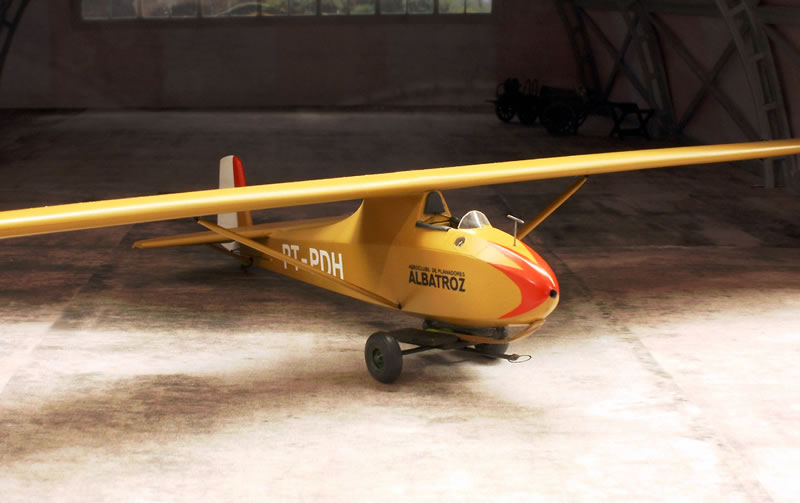
With this impressive track record, the design more than fulfilled the task for which its creator Edmund Schneider, a designer and manufacturer of gliders from the Silesian town of Grunau, had conceived it. The plans for a new, robust and easy-to-build glider were finalised in the winter of 1930/31. The new design was to be suitable for basic training as well as for the rough, demanding operation as a club aeroplane.
It is interesting to note that the new construction, christened "Baby", was designed from the outset to be built using simple means. Today it is astonishing that Edmund Schneider was originally concerned that the Baby might not attract enough attention and interest. So gliding and engineering legend Wolf Hirth was asked for permission to advertise with his name; incidentally, this became the source of a misunderstanding that is still circulated today, namely that Wolf Hirth was the designer behind the successful design.

Thanks to the uncomplicated construction of the hexagonal cross-section plywood fuselage and a wing with 24 of the 44 ribs being identical, even private individuals and clubs could dare to build a Grunau Baby. Once completed, the glider with a wingspan of 13.50 metres and a length of 6.15 metres stood before its proud owners. A wing loading of 17.6kg/m2 and a glide ratio of 17 (at 60km/h) show that the Baby was never intended to be a high-performance glider. The basic design was produced in several modifications and variants over the years; in addition to pure gliders, there is even a small series of a Grunau Baby motorised glider produced from 1938 under the name "Motorbaby".
The variant IIb shown here represents one of the most frequently built versions. Compared to the Baby II, it had a longer wingspan, Schempp-Hirth dive brakes and an enlarged aileron. After the war, production of the IIb continued in many places in both East and West: for example in the GDR, where 400 examples were produced, but around 100 new examples were also built in Great Britain and Poland. The Grunau Baby IIb was also produced in Austria: in the 1950s, a series of Baby IIb - recognisable by the modified round rudder - was manufactured by the aircraft manufacturer Oberlerchner in Seeboden on Lake Millstätter See in Carinthia.
However, the home of the prototype of my model is more exotic: this Baby with the registration PT-PDH flew in Brazil.
Model kits of gliders, let alone civilian ones! - tend to be a niche product. So I was all the more pleased when I came across the Grunau Baby kit from Fly. What's more, on first inspection, the plastic parts seemed to be quite trustworthy and reasonably made. In addition, there is another pleasing fact: Fly offers the Grunau Baby with an astonishing range of decal versions.

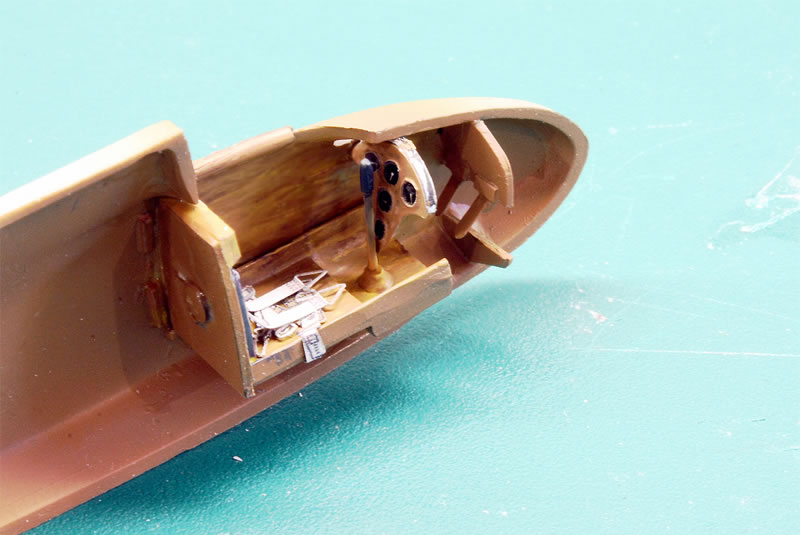
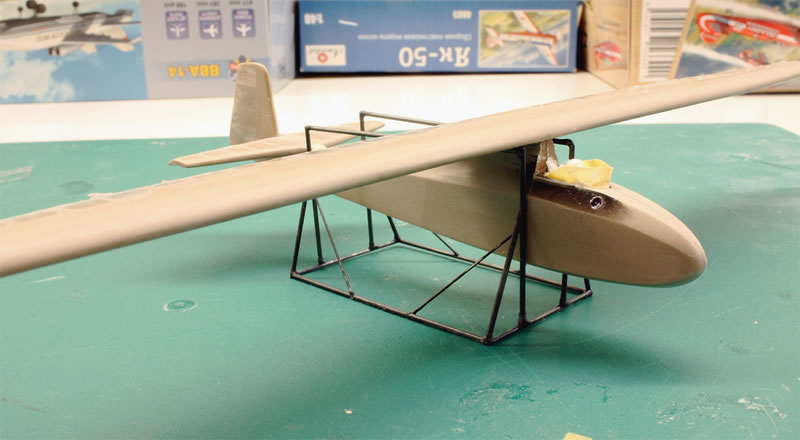
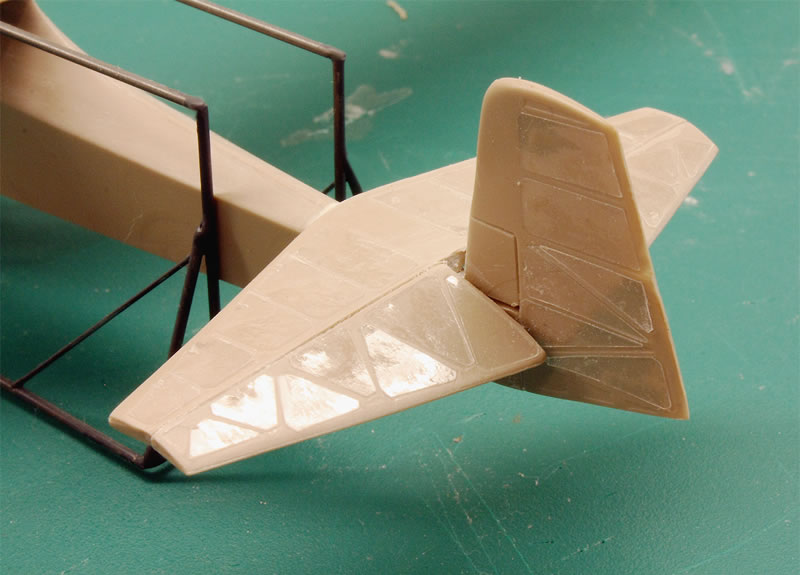
The construction itself offers few surprises and can in principle be completed quickly. The fact that I actually spent more time on the Grunau Baby is due to a certain peculiarity of fabric-covered wings: on some originals of the Baby you can clearly see how transparent the fabric-covered areas can appear! Although the degree of transparency depends on the type of paintwork and varnish, I wanted to at least hint at this attractive feature.
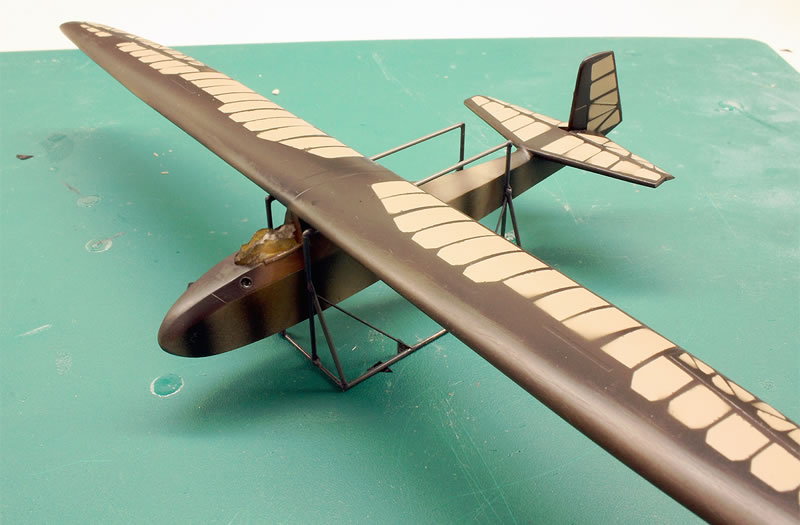
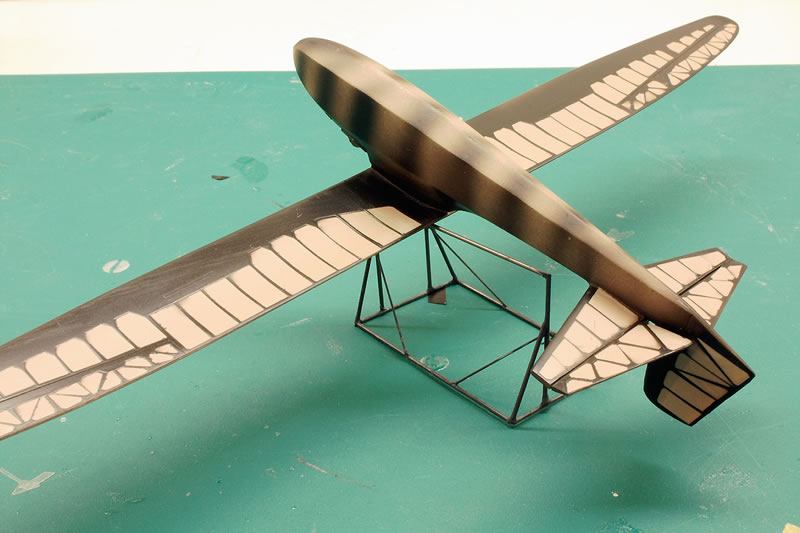

To this end, I first masked off the parts of the wings that were to appear translucent. Then I primed them with dark brown paint so that the resulting light and dark areas could still show through under the very thinly applied surface colour. The final result is that the wings now actually appear to be divided into translucent and opaque zones.
The Grunau Baby IIb was a varied and insightful modelling project for me. The plastic and etched parts as well as the decals of the kit are absolutely fine and fit comfortably in a few steps to a coherent replica of this much-built and much-flown aircraft, so that I am pretty sure that it will not remain with a single Grunau Baby in my showcase!
If you would like to see the kit and the building process for yourself, you can find a detailed building report on "Scalemates" here:
Grunau Baby (1:48) by Roland - Albums (scalemates.com)
As always, I am open to suggestions and questions:
ro.sachsenhofer@gmx.at
Model, Images and Text Copyright ©
2024 by Roland Sachsenhofer
Page Created 28 March, 2024
Last Updated
28 March, 2024
Back to HyperScale Main Page

|
Home
| What's New | Features | Gallery | Reviews | Reference | Resource Guides | Forum |